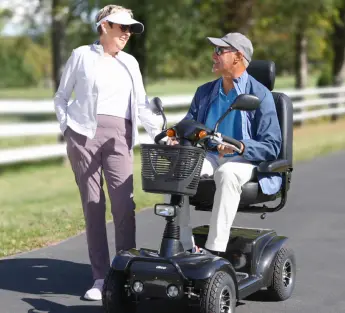The Ergonomics of Wheelchairs
Wheelchair Ergonomics
Ergonomics is about the relationship of the body to work. It has long been a priority in industrial and office settings where on the job injury from physical overuse is a danger. What does it have to do with wheelchair users? Well, ergonomics is really about using our bodies safely and efficiently, in a way which doesn't strain our tissues. A way which is comfortable when we're working, cooking, driving, or wheeling.
And it's about using the proper tools in the best way. Your physical relationship to the tools you use – namely your wheelchair, determines a lot about how you are going to use your body.
Think of yourself as having a lifetime limit of muscle capacity that you want to use carefully - to spend like it was precious currency. When you drive a wheelchair all day every day the potential to overuse your muscles is considerable.
Ergonomics deals with four key criteria. Force. Repetition. Duration. Posture. Let's consider how they apply to wheeling.
Force
Hard impact jolts our joints and causes our muscles to tense in response. Some wheelers snap their arms at the end of a push, which puts force on the shoulder joints. If you are able to do a wheelie over a curb, do you land with impact, or do you let yourself over the edge gently?
Repetition
This is a pretty obvious one. How many pushes does it take you to travel a given distance? Take better advantage of coasting (which means keeping your tires inflated and your chair well maintained) and consider going a little slower (it takes more pushes to go faster).
Duration
Refers to continuous muscular effort. It doesn't have to be heavy lifting. Small exertions continuously held are as stressful to your tissues as brief, heavy effort. The real key here is movement. You will not be continually exerting muscles if you are active and changing your posture throughout the day.
Posture
People often spend a lot of time leaning on armrests or a table because they are not being supported with good posture in their chairs. This is a matter of seat angle and back angle, adjust them according to your body shape and your degree of upper body balance. Poor seating makes you slump, trying to get stable. The optimal posture is more upright, allowing your spine to support you. It’s a structural column and that’s what it’s intended to do. Seat depth is involved here, too. If your seat is too short for your legs, then you are being robbed of the greater stability that comes with full contact between the seat and your legs.
Perhaps the most important relationship between your body and your wheelchair is the position of the wheels relative to your hands and arms. If you are sitting too high above the wheels, with your arms nearly straight, you won’t be able to take advantage of your arms as you push. This will force you to do it mostly from the shoulders – a situation that is all but guaranteed to cause injury. If you are sitting too low relative to the wheels, your arms will be forced up too high as you grab the rim to start the push, which prevents your arms from moving in a natural range of motion and makes pushing more difficult. In general, it should be possible to grasp the wheel at the "ten-o’clock" position and apply force through the push all the way to two-o’clock.
Basically, ergonomics is about comfort. Choose, adjust, and use your wheelchair with that in mind, and you'll reap the benefits of optimal health and activity.





 Contact Us
Contact Us
 M-F 9am - 6pm ET
M-F 9am - 6pm ET
 Request parts
Request parts Request Service
Request Service
